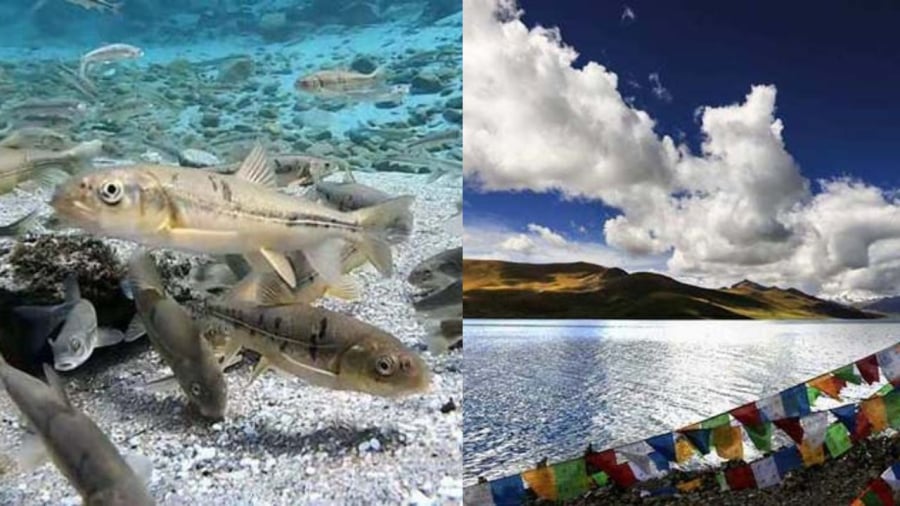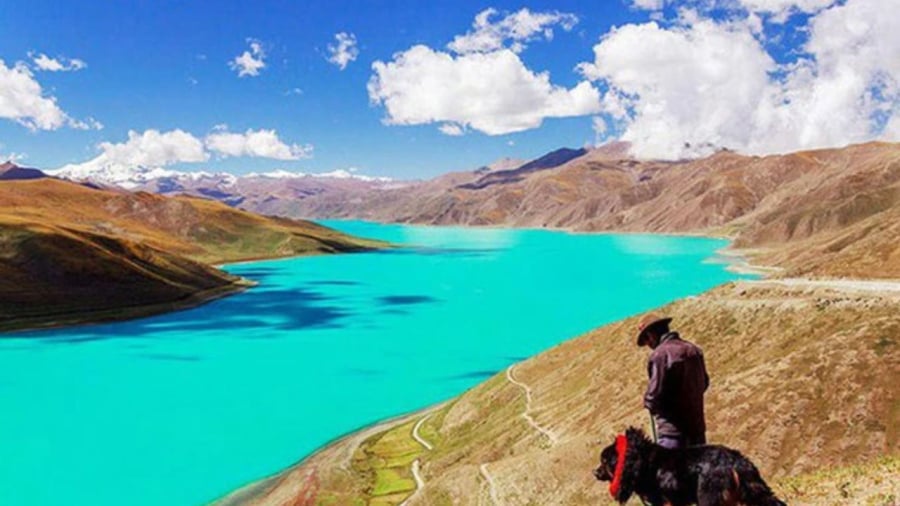Tibet has long been hailed as the last pristine land on Earth. Located at an average altitude of over 4,200 meters above sea level, Tibet boasts not only breathtaking natural landscapes but also a deep-rooted Buddhist culture and unique spiritual practices such as water burial.
Pristine and Sacred Tibet
Tibet boasts a diverse terrain, ranging from majestic snow-capped mountains to peaceful valleys, vast deserts to majestic glaciers. Notably, it is also renowned for its dense network of lakes and rivers, captivating all who set foot in this enchanting land.
One of the most famous and sacred sites in Tibet is Yamdrok Lake, affectionately known as Sun Lake. With an altitude of over 4,440 meters above sea level and a size of approximately 675 km², Yamdrok may not be the largest lake, but it is revered by the locals as a sacred treasure.

The name “Yamdrok” in Tibetan means “Swan Lake,” evoking a pure and ethereal image. According to local beliefs, Yamdrok is not just a lake but the embodiment of celestial maidens who bring life and peace to the harsh Tibetan landscape.
Notably, Sun Lake is home to an extraordinarily large natural fish population. It is estimated that the total weight of the fish in the lake could exceed 800,000 tons. However, what surprises many is that despite this abundance, the Tibetans refrain from fishing or exploiting this resource for food.
Why Tibetans Refrain from Eating Fish from Yamdrok Lake
Although there are no legal restrictions on fishing, Tibetans steadfastly avoid consuming or exploiting the fish from Sun Lake. This deep-rooted belief is rooted in their spiritual faith and long-held religious convictions.
- Sacred Fish: In Tibetan culture, the fish in the lake are considered sacred beings, regarded as embodiments of water deities. Eating fish is equated with taking multiple lives, as opposed to slaughtering a single cow to feed many. They believe that taking fewer lives reduces the act of killing, aligning more closely with the Buddhist principle of compassion.
- Water Burial and Ancestral Connections: Another factor contributing to this belief is the practice of water burial, a common funeral rite in Tibet. Locals hold that water is the source of life, and upon death, returning to nature through the serene waters is the most peaceful and tranquil passage.
While water burial is not performed in every lake, and Sun Lake is not a frequent site for this ritual, the belief in the connection between fish and the ancestral spirits runs deep. Thus, killing fish is not only considered taking a life but also an offense to the ancestors and deities.

- Scientific Perspective: The fish in Sun Lake, while abundant, are not considered suitable for consumption due to the lake’s unusual natural conditions. With low water temperatures year-round, low dissolved oxygen levels, and harsh living conditions, the fish have an extremely slow growth rate. The food sources in the lake are also scarce, leading the fish to absorb all compounds in their environment, including toxins.
This offers a partial explanation as to why, despite its large fish population, Sun Lake has never become a common food source for the people of Tibet.
Sun Lake: A Green Jewel in a Land of Legends
Tibet captivates not only through its majestic landscapes but also through its deep-rooted culture and ancient beliefs. It is these mysteries and seemingly simple taboos that contribute to the unique spiritual identity of this sacred land.






























